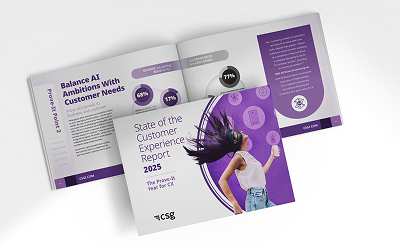Legacy systems are slow to change and even slower to complete processes. Meanwhile, consumer expectations keep rising. To compete, telecom companies need to launch faster and deliver a better digital experience.
Open Digital Architecture (ODA) is the path to success. It’s a framework for creating smarter, more convenient ways to design and operate telecom systems. With ODA, you can eliminate data silos, integrate easily and scale without rework. Once you’ve streamlined these tasks, it’s easier to stay flexible and competitive in the telecom industry.
What Is Open Digital Architecture?
ODA is a reference framework designed to make it easier for telecom operators to build, deploy and scale their systems. Instead of relying on vertically integrated IT stacks, ODA offers modular, cloud-ready components that all use the same language. They have standardized APIs and data models, as well. The goal behind the blueprint is to offer companies the resources needed to get up and running faster.
ODA isn’t just a set of modules and blueprints—it’s also a mindset and design principle. Instead of being boxed in by a vendor or legacy infrastructure, you can swap components and evolve your stack on your terms.
Open Digital Architecture Fundamentals
ODA is fundamentally about collaboration and cloud convenience. The framework is built around four big ideas:
- Cloud-native components: Working with cloud-native components makes scalability, resilience and flexibility simple and out of the box.
- Open APIs: Provide seamless interoperability between different vendors, services and platforms.
- Reusable, standardized services: Standardized services eliminate duplication and speed up time to market.
- Active data models: Use active data models for real-time data sharing and automation.
Use ODA to build products once while still deploying many of them and adapting quickly. When launching a new process or product, you won’t have to start from scratch.
How Can Open Digital Architecture Improve Service Delivery?
Service delivery is critical for your success. ODA helps you deliver your services faster and at scale by making it simple to bring new offerings to market in weeks instead of months.
Need to roll out bundled services or respond to new demands? ODA gives you plug-and-play capabilities. Prebuilt, reusable service components let you create and launch new bundles without tearing down existing infrastructure.
How consumers can benefit from ODA implementation:
- Easier onboarding
- Smarter personalization
- Consistent interactions
- Faster rollout

This results in:
- Enhanced productivity
- Streamlined operations
- Faster go-to-market timelines
- Greater product flexibility
- Lower delivery costs
How Does Open Digital Architecture Improve the Consumer Experience?
ODA isn’t just about improving the telecom industry behind the scenes. It’s also intended to improve the consumer experience. It’s easier to personalize the user experience with cloud-based, modular systems. Service activations become more manageable, and you can resolve issues faster. Here’s how consumers can benefit from ODA implementation:
- Easier onboarding: ODA connects backend systems through cloud-native sources and open APIs. Instead of siloed processes, everything works together. Consumers can easily browse offerings, sign up for services and get connected. Whether online, in-store or on-app, ODA gives them the same fast, connected experience.
- Smarter personalization: Telecom companies can understand a consumer’s profile in real time with an interoperable system and active data models. You can see data on use patterns, preferences, support history and more. Providers can offer consumers more personalized recommendations and services with real, relevant knowledge.
- Consistent interactions: ODA integrates across touchpoints. Websites, call centers, apps and in-store systems are on the same page. Users get a unified experience no matter where they are. This means fewer questions and easier ticket resolution.
- Faster rollout: Because ODA is modular, you can deploy new services, features and upgrades in days, giving consumers quicker access to offers, plan changes and tools.
What Standards Govern Open Digital Architecture?
While ODA is, well, open, it’s not a free-for-all. ODA is built on set standards to promote long-term sustainability and collaboration. TM Forum is the connective tissue behind ODA. They spearheaded the initiative to create ODA by collaborating with industry experts like CSG. ™ Forum’s Open APIs, Information Framework (SID) and Business Process Framework (eTOM) are the ODA building blocks.
Their resources standardize the process, making it easier to integrate vendors and keep everyone on the same page. Instead of custom coding for everything, telecom engineers can work from the same foundation and adapt ODA to their needs.
How Can Legacy Systems Be Integrated With Open Digital Architecture?
Digital transformations for telecom companies don’t happen overnight.. TM Forum built ODA to support phased transformation to work around this challenge. With the right strategy and partner, you can modernize your operation while slowly phasing out legacy systems.
The key is interoperability. ODA APIs and middleware can work with your legacy tools, slowly shifting you to modern workflows without disrupting daily productivity. Modular migration is a common strategy. Replace your components one at a time based on business impact and readiness. Each new addition creates a bridge to complete ODA-aligned operations. Telecom providers can integrate the least impacted areas first, working up to the most critical parts of their stack.
What Is the Future of Open Digital Architecture in Telecom?
ODA is here to stay, but that doesn’t mean it’s stagnating. ODA’s adaptability and collaborative nature make it ideal for integrating new advancements as they arrive. With the telecom industry embracing ODA, expect to see these new tools streamlining your work:
- 5G and 6G: While 5G is common in parts of the world, we’re only expected to hit 50% of connections worldwide using 5G by 2030. 6G is predicted to arrive around that time. But, wider ODA adoption could speed up 5G’s expansion. Operators can use network slicing and ultra-low latency to build and launch services faster.
- AI: Artificial Intelligence (AI) is the latest power player on the scene. AI and machine learning can combine with ODA’s real-time data to improve automation, predictive maintenance and personalized consumer experiences.
- B2BX models: ODA simplifies multi-partner ventures. Your operations can use B2B2X business models to help companies reach a broader customer base. Serving end-users and enterprise clients means having an open, flexible infrastructure like ODA.
- Edge computing: This model lets devices work on the “edge” of a network closer to the user. ODA’s modular architectures make it easy to handle data at the edge.
Build a More Agile Future
If you’re exploring ODA, you’re thinking about the bigger picture. Legacy systems leave telecom providers disjointed and slow. Cloud-built, future-forward systems deliver faster launches and better consumer experiences. But making that transformation happen takes expert support and solutions.
That’s exactly what CSG is delivering with CSG Ascendon. This cloud-native SaaS platform was designed for flexibility and speed. Ascendon helps you launch new digital services, onboard consumers and evolve with your market demands. With built-in support for APIs, agile monetization and personalized engagement, Ascendon makes ODA principles real without overhauling your entire tech stack. See how it all comes together when you request a CSG demo today.











